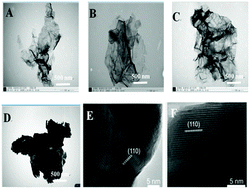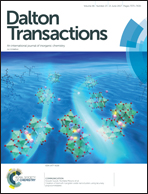Controllable n-Fe2O3@graphene nanomaterials by ALD applied in an aptasensor with enhanced electrochemical performance for thrombin detection
Abstract
An elegant atomic layer deposition (ALD) method has been employed for the controllable preparation of a uniform Fe2O3-coated graphene nanostructure (Fe2O3@graphene). The Fe2O3 coating thickness of the Fe2O3@graphene nanostructure can be tuned by varying the cycle number of Fe2O3 ALD. The produced Fe2O3@graphene composites are characterized by transmission electron microscopy (TEM), X-ray photoelectron spectroscopy (XPS), Raman spectroscopy and cyclic voltammetry (CV). It is revealed that Fe2O3 is effectively deposited on the surface of graphene. Combined with the high affinity and specificity of an aptamer, a simple, rapid and sensitive electrochemical aptasensor was successfully fabricated for thrombin detection. The resulting electrochemical aptasensor displays a linear response to thrombin in the 1.0 × 10−11 to 4.0 × 10−9 M concentration range with the detection limit of 1.0 × 10−12 M (at an S/N of 3). The described controllable multifunctional graphene nanomaterials from ALD are expected to be applied in a biosensing platform which will exhibit wide applications in biological, medical, and environmental fields.



 Please wait while we load your content...
Please wait while we load your content...